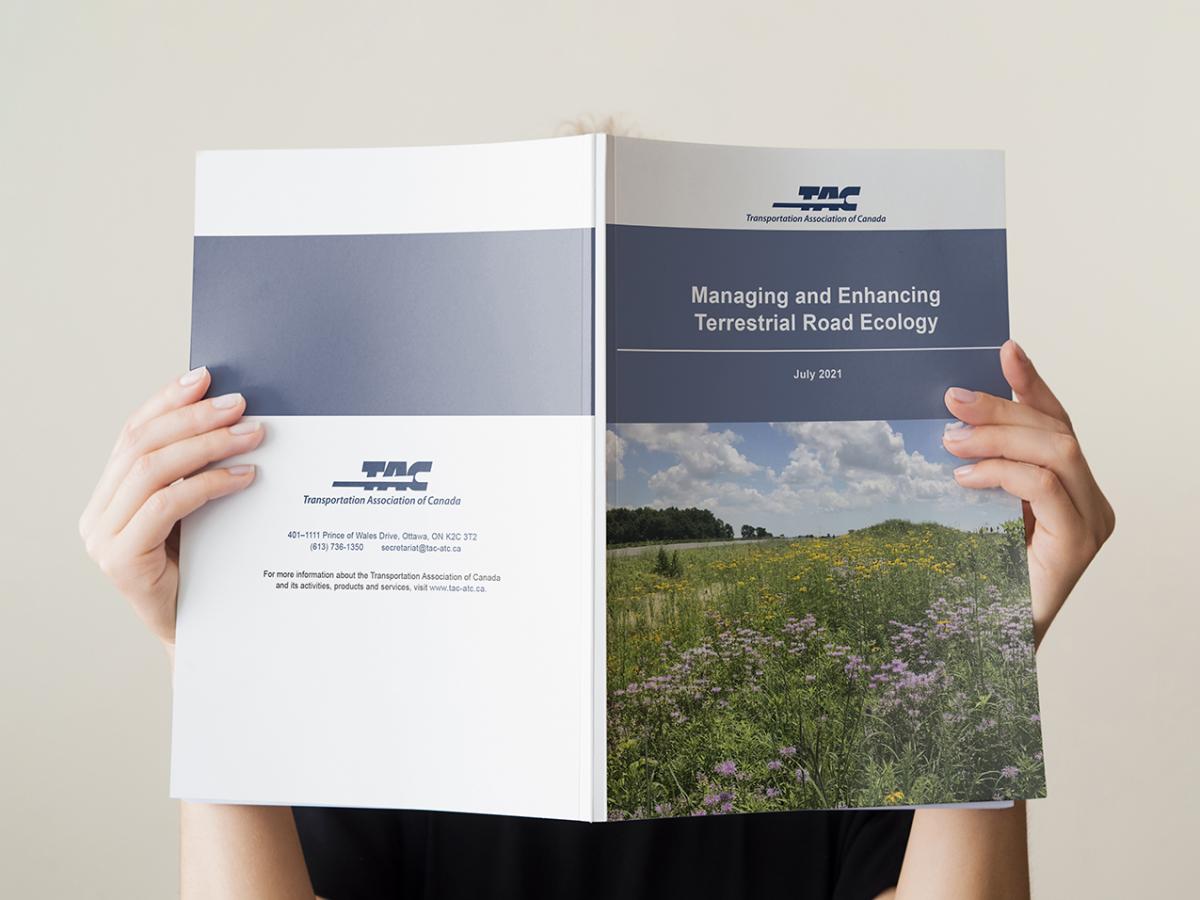Roads and traffic influence the character, health and functioning of their natural environment in both highway and urban settings.
 Managing and Enhancing Terrestrial Road Ecology, published by the Transportation Association of Canada (TAC), presents practitioners with detailed information on this emerging field of study and practice in “road ecology”, including case studies of new builds, retrofits and changes in operational practices that are designed to be more responsive to ecological systems and their associated plants, animals and habitats.
Managing and Enhancing Terrestrial Road Ecology, published by the Transportation Association of Canada (TAC), presents practitioners with detailed information on this emerging field of study and practice in “road ecology”, including case studies of new builds, retrofits and changes in operational practices that are designed to be more responsive to ecological systems and their associated plants, animals and habitats.
This synthesis of practice identifies state-of-the-art planning, design and operational measures that road authorities can use to minimize impacts on animals and their habitats, help conserve biological diversity, and manage safety and cost considerations. The report also discusses emerging concerns, including road management, specific to Canada’s north, climate change, the spread of invasive species, the impacts of night lighting, and the protection of species at risk such as bats and caribou. It integrates scientific research as well as practical experience from around the world with an emphasis on North America.
“This project generated many insights into the art and science of the possible, and the practical, in Canada” said Ethan Askey, Chair of the project’s steering committee and a transportation department manager with the City of Calgary. “The resulting synthesis of practice offers detailed information on things like wildlife protection, different approaches to roadside landscaping, creating pollinator habitat—important subjects that other guides only address at a high level.”
The report was developed for TAC by WSP Canada. Electronic copies can be downloaded for free from TAC’s website. TAC’s online catalogue gives details on all of the association’s publications.
TAC is a national, not-for-profit technical association focusing on road and highway infrastructure and urban transportation. Its 500 corporate members—including all levels of Canadian governments, businesses, academic institutions and others—work together to address transportation challenges by sharing innovative ideas and experiences, creating knowledge, and pooling resources.